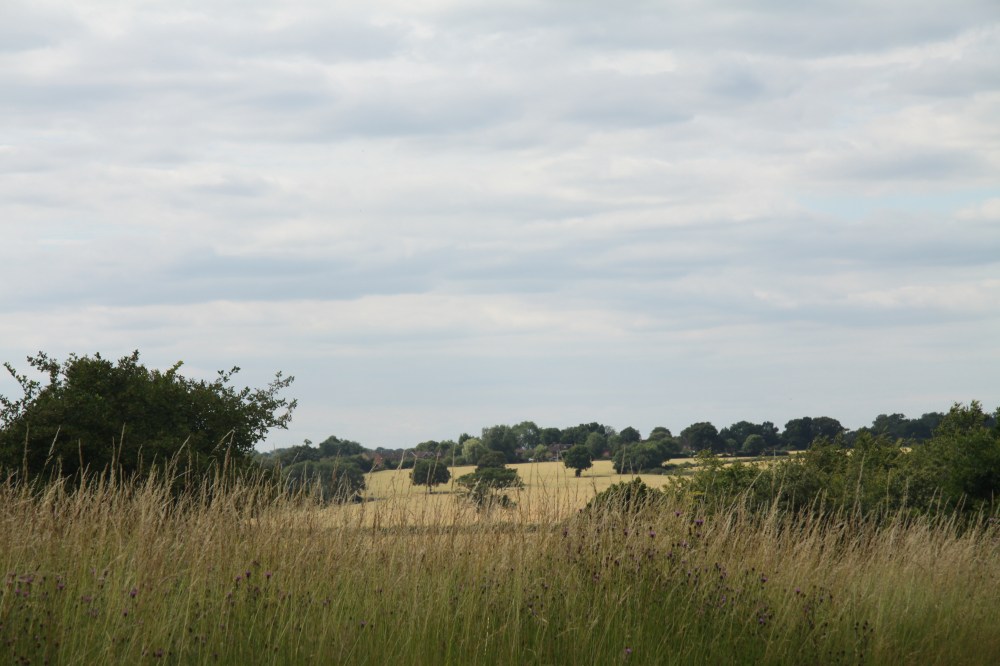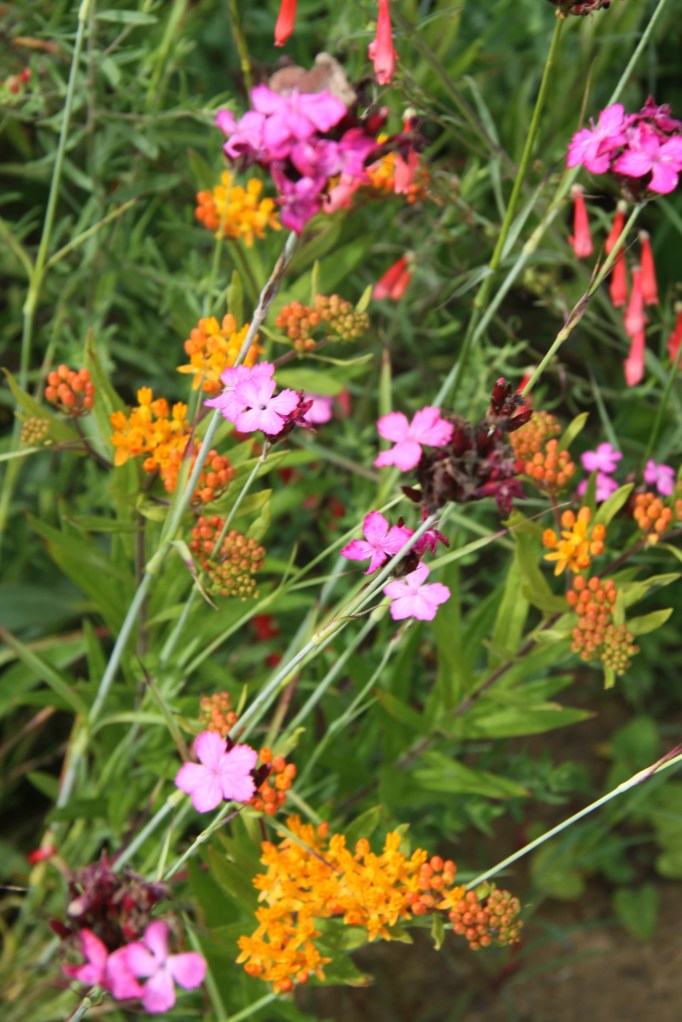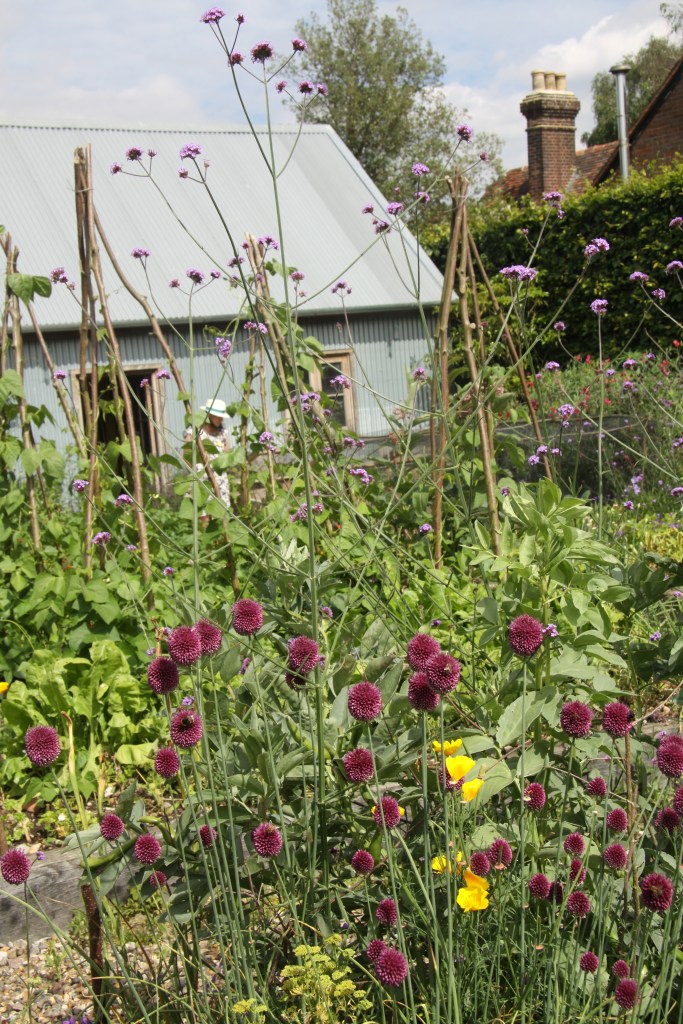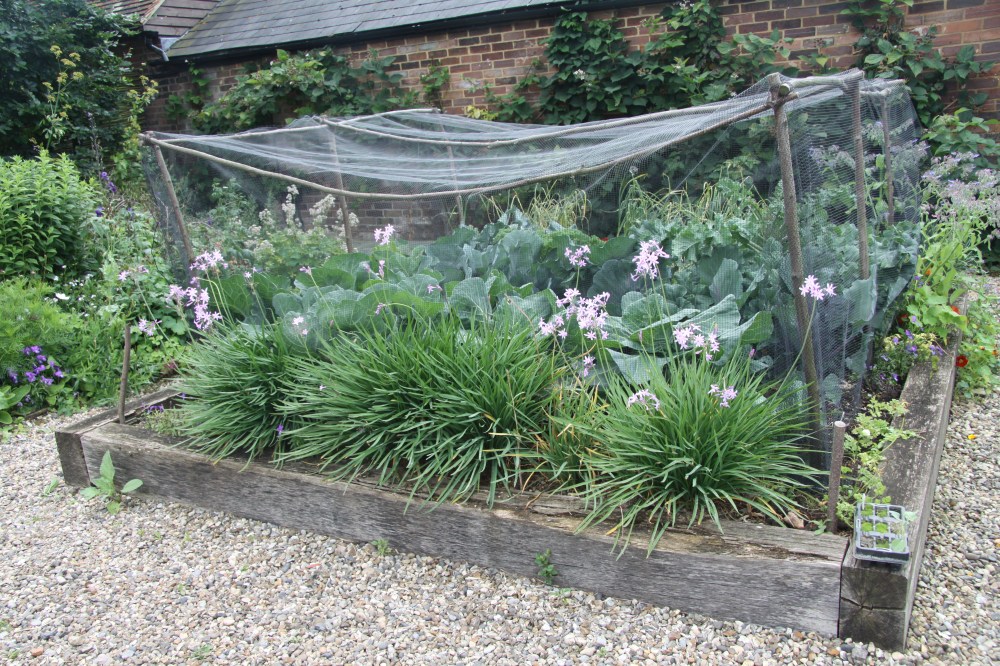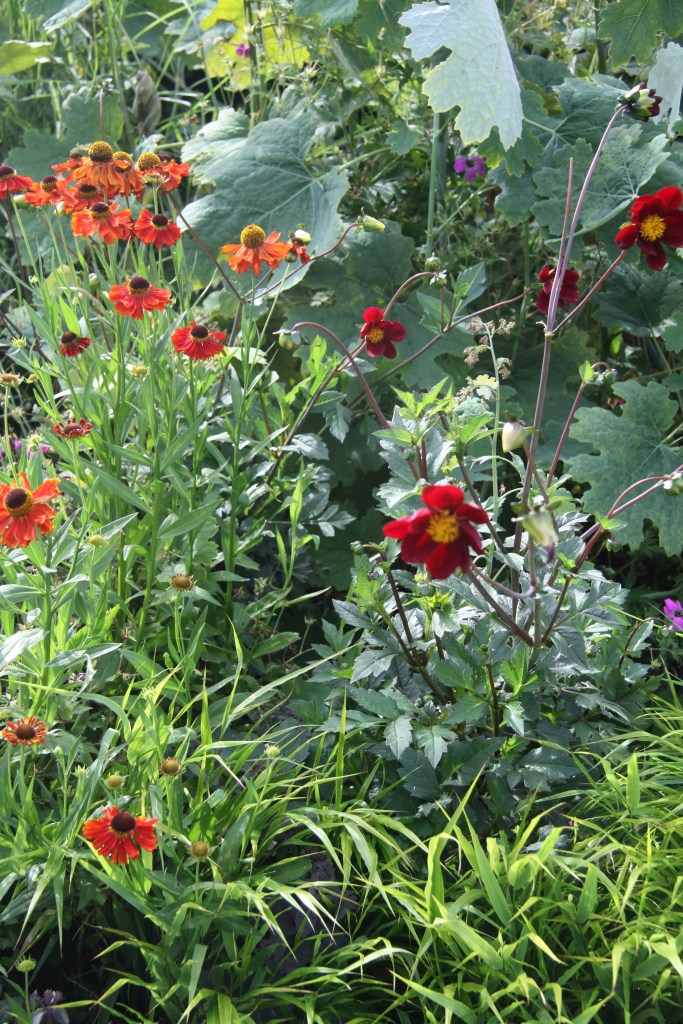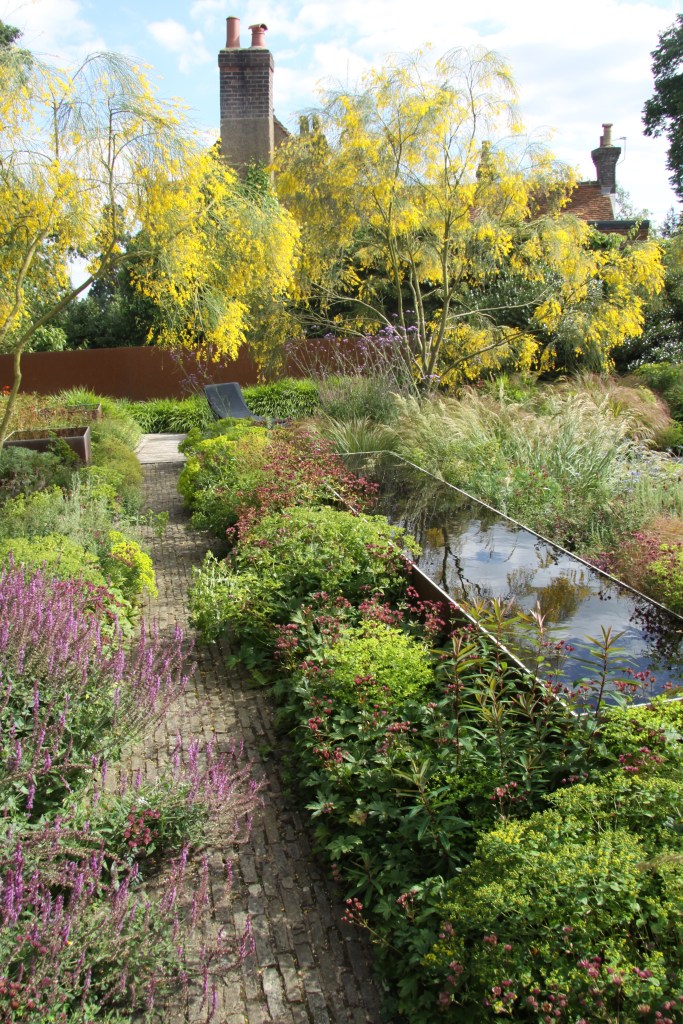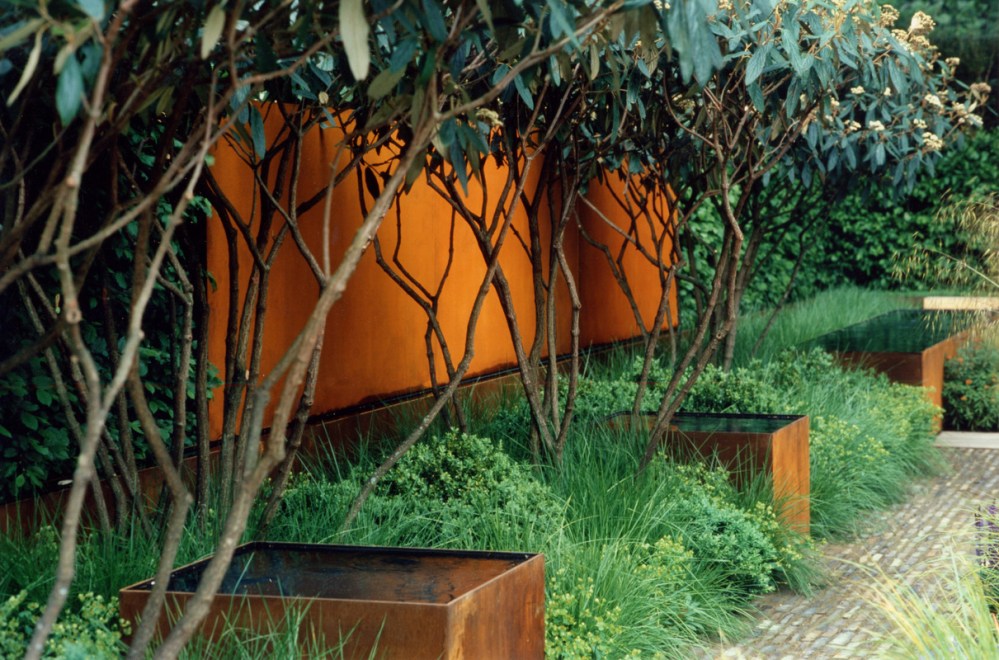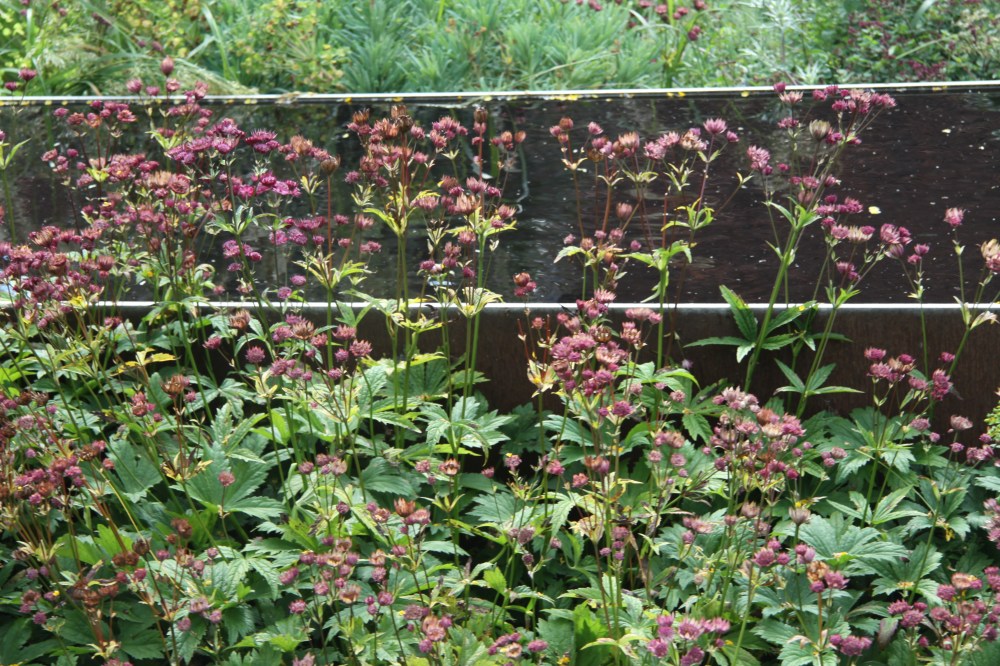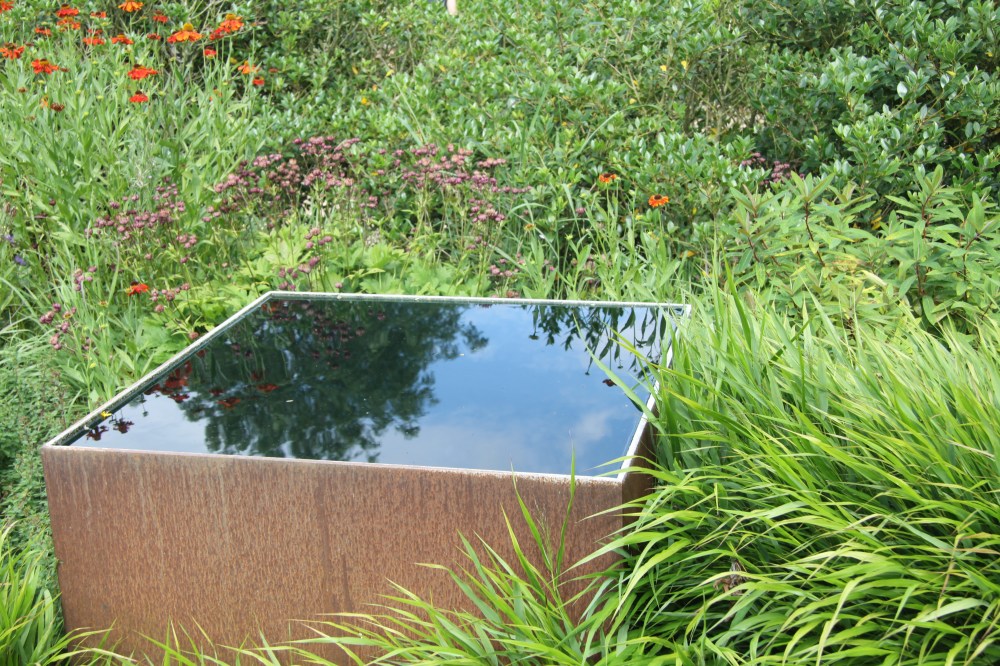LOOKING AT THE GARDEN IN WINTER WITH AN ANGEL ON MY SHOULDER
 Ethereal seedheads of Pennisetum alopecuroides ‘Hameln’, RHS Wisley
Ethereal seedheads of Pennisetum alopecuroides ‘Hameln’, RHS Wisley
It has become something of a personal tradition at this time of year to set off with my backpack for a day of Christmas shopping and to find myself veering off into the cool marble halls of a favourite gallery or museum instead. Last week, on my way to buy some boxes of heavenly salted caramel chocolates from Fortnum & Mason (purchased with the time-honoured principle of three boxes to give as presents, one box to present to yourself … ) it became obvious that my time would be best spent in the Sainsbury Wing of the National Gallery. Here, amongst roomfuls of paintings which must collectively feature hundreds or even thousands of angels, the Gallery has cleverly chosen just ten particularly fine, 14th and 15th Century paintings to form a manageable and uplifting ‘Angel Trail’ for the Christmas visitor.
It is a powerful and cheering experience and I urge you to call in and see the paintings for yourself – at any time of year. The modest size of the ‘Angel Trail’ is key to its success because you have space in your head to look at the paintings properly. I remember hearing David Linley on Desert Island Discs describing how his father, Anthony Armstrong-Jones, would regularly pop into the National Gallery with him, maybe on a Saturday afternoon on the way to something else, with the mission to look at just one painting intently. It was a brilliant gift from father to son.
The ‘Angel Trail’ paintings linger in my head as I return to my everyday world of plants and gardens. Ranks of golden willow leaves suddenly have the quality of angel wings and a fragile, papery seed head becomes a light ethereal presence. So here is my Christmas blogpost looking at the garden in winter, with an angel on my shoulder.
‘ANGEL TRAIL’ PAINTING NO. 1

The Assumption of the VIrgin, Matteo di Giovanni, tempera and gold on wood, probably 1474, National Gallery, London, Room 59
This monumental Assumption of the Virgin in its towering frame, offers a bulging Virgin Mary, radiant in pink, gold and white on a shimmering gold ground. The angels busy themselves in a fluttering network around her.
As I walk around the RHS garden at Wisley, the leaves of Hamamelis mollis ‘Boskoop’ hang fat, round and golden, happily echoing Matteo di Giovanni’s bold, fecund painting.
 Hamamelis mollis ‘Boskoop’
Hamamelis mollis ‘Boskoop’
Witch hazel is mostly grown for the fiery flowers that will open up from those velvety buds, but the power of the shrub to bring light into the late season garden with its autumn foliage colour should never be under estimated.
In a sunnier part Wisley’s Battleston Hill, the fine, shredded flowers of Hamamelis x intermedia ‘Orange Peel’ are already blazing away in this exceptionally mild December.
 Hamamelis x intermedia ‘Orange Peel’
Hamamelis x intermedia ‘Orange Peel’
For the white and pink of the Virgin’s robe, and the throng of angels that encircle her, I offer this lovely rose – a tangle of white blooms and fading red hips against a pale blue winter sky:


White roses and rose hips against a winter sky
‘ANGEL TRAIL’ PAINTING NO. 2

The Coronation of the Virgin, part of the San Benedetto Altarpiece, Lorenzo Monaco, tempera on wood, 1407-9, National Gallery London, Room 53
I am struck by the simple clarity of the pale pink, yellow and blue of the angels’ robes in this Lorenzo Monaco painting.
At Wisley I find the lovely evergreen ground cover Vinca difformis beginning to light up the woodland floor with its translucent powder blue flowers. This is a vigorous but not invasive periwinkle which reliably flowers in late winter and early spring. I am happy to note how the pairs of bright green leaves form pairs of angel wings along the stem.

 Vinca difformis, RHS Garden, Wisley – palest blue flowers and pairs of leaves like angels’ wings
Vinca difformis, RHS Garden, Wisley – palest blue flowers and pairs of leaves like angels’ wings
I struggle to match the chalky yellow of the central angel’s drapery, but in Rosa ‘Mortimer Sackler’, (an almost thornless repeat flowering shrub rose with loosely double, very fragrant soft pink flowers), I find an excellent echo for the subdued whitish-pink of the angels on either side.
 Rosa ‘Mortimer Sackler’
Rosa ‘Mortimer Sackler’
Near the Alpine Houses, trailing rosemary (Rosmarinus officinalis ‘Prostratus Group’) is in full flower. The shape of its arching stems mirror the shape of angel wings:
 Rosmarinus officinalis Prostratus Group
Rosmarinus officinalis Prostratus Group
‘ANGEL TRAIL’ PAINTING NO. 3

‘The Wilton Diptych’ – Richard II presented to the Virgin and Child by his Patron Saint John the Baptist and Saints Edward and Edmund, English or French (?), egg on oak, about 1395-9, National Gallery London, Room 53
‘The Wilton Diptych’ is one of my favourite paintings. Here the eye is immediately drawn to the unforgettable rhythmic quality of the angels’ wings on right hand panel, as well the rich cobalt blue of the angels’ and Virgin Mary’s gowns.
At Wisley I fall for a fantastic willow with its suspended ranks of golden-yellow autumn leaves. It is Salix udensis ‘Sekka’ – the Dragon or Fantail Willow. It is a handsome plant for a moist part of the garden with unusual flattened stems and silvery green catkins. It can be stooled to 30cm above ground in spring to keep it a manageable size and is available from the wonderful Bluebell Nursery.

Salix udensis ‘Sekka’, RHS wisley
In my search for elegant, rhythmically arranged leaves I make a new discovery: a really good looking, low growing Mahonia. Here the Mahonia eurbracteata ‘Sweet Winter’ – which will only reach a metre in height – makes a valuable evergreen understory to a handsome, rounded specimen of variegated Chinese privet, Ligustrum lucidum ‘Excelsum Superbum’:


Mahonia eurobracteata ‘Sweet Winter’ growing under variegated Chinese Privet at RHS WIsley
A few days later I am walking around the garden of Gravetye Manor in East Sussex, the former home of Victorian ‘wild gardener’ William Robinson and now a wonderful hotel. The garden is is being passionately and imaginatively restored under Head Gardener, Tom Coward, and I have a brilliant morning with him learning so much about every aspect of the garden.
The heavy-boughed Magnolia campbellii – whose graceful branches dip down over the terraces of the Little Garden and the Flower Garden – also reminds me of the elegant Wilton Diptych angels. The Magnolia is silvery in bud against the bursts of rich blue sky.

Magnolia campbelii, Gravetye Manor
‘ANGEL TRAIL’ PAINTING NO. 4
 The Nativity, Piero della Francesca, oil on poplar, 1470-75, National Gallery London, Room 66
The Nativity, Piero della Francesca, oil on poplar, 1470-75, National Gallery London, Room 66


 Details from: The Nativity, Piero della Francesca, oil on poplar, 1470-75, National Gallery, London, Room 66
Details from: The Nativity, Piero della Francesca, oil on poplar, 1470-75, National Gallery, London, Room 66
I have long loved the soft, sober, no frills – no wings – absorption of these music making angels in this scratchy, tough, almost monotone countryside Nativity. There is a timelessness and naturalness to the painting style – you can feel the arrival of winter in a warm, dry land.
In the garden at Gravetye, stands of artichokes are left to cast jagged silhouettes against the sky, the glaucous new foliage contrasting as sharply as baby Jesus’ blue blanket with the arid land around him.

 Winter seed heads of artichokes, Gravetye Manor
Winter seed heads of artichokes, Gravetye Manor
In one border, slender golden stems of Calamagrostis form a sand coloured sheet beneath the artichoke seed heads: WInter seed heads of Artichokes with Calamagrostis, Gravetye Manor
WInter seed heads of Artichokes with Calamagrostis, Gravetye Manor
Back at Wisley, Phlomis russeliana forms neat stands of pompom seed heads on upright stems – a good match for the tightly shaped trees in the background of the Piero della Francesca painting.

Phlomis russeliana seedheads, RHS Wisley
‘ANGEL TRAIL’ PAINTING NO 5

The Annunciation, Fra Filippo Lippi, egg tempera on wood, about 1450-53, National Gallery, London, Room 54


Details from The Annunciation, Fra Filippo Lippi
An extremely beautiful and intense painting with subdued, subtle colouring and a powerful sense of the Virgin Mary bathed in the light of the Angel.
In the garden at Wisley the arching stems of this berberis, the leaves just turning to gold, light up and give energy to a rather demure autumn shrubbery.

 Arching stems of berberis, RHS Wisley
Arching stems of berberis, RHS Wisley
It is hard to find a sweetly jewelled spring meadow in December, but this lone magenta Cyclamen coum has emerged from a low mat of rounded, silver-marked leaves and will soon be joined by more flowers.
 The first flower in a mat of Cyclamen coum
The first flower in a mat of Cyclamen coum
In the garden at Gravetye I am smitten by the soft, low mounds of winter flowering heather – Erica carnea. Tom Howard is pleased that I like them so much – winter flowering heathers have become so deeply unfashionable -but here they look wonderful, gently clothing the stone walls and providing an inviting, cushioning, tiny-flowered back drop to the steps and benches. He has been trying to champion them, but is not sure how well the conversion attempt is going! They are fantastically easy to grow and, unlike most heathers, don’t need an acidic soil. These heathers at Gravetye have the idiosyncratic, spreading elegance that comes, of course, with plants of a certain age, so consider planting sooner rather than later.


Mounds of Erica carnea providing a soft backdrop for steps and benches at Gravetye Manor
‘ANGEL TRAIL’ PAINTING NO. 6

Virgin and Child with Musical Angels, Master of the Saint Bartolomew Altarpiece, about 1485-1500, oil on oak, National Gallery, London, Room 64


Details of Virgin and Child with Musical Angels, Master of the Saint Bartolomew Altarpiece, National Gallery, London
This lovely, playful, much more mannered painting is full of movement and the colours are bright – clear pinks, whites and a luminous pale gold. The delicate columbine to the left of the Virgin allludes to the Holy Ghost and to the right there are cornflowers and carnations – the latter symbolic of Christ’s future sacrifice.
In the absence of these early summer flowers I suggest the beautiful, velvety buds of the winter flowering shrub Edgeworthia chrysantha. I love the baby-toed neatness of the buds against the elegant network of cinnamon coloured branches. Soon the buds will open to reveal fragrant yellow flowers, immaculate clusters of tiny yellow trumpets which look almost too perfect to be true.

 Edgeworthia chysantha, RHS Wisley
Edgeworthia chysantha, RHS Wisley
For pale pink and an even sweeter fragrance which carries tantalisingly in the air, upright shrubs of the wonderful Daphne bholua are already in flower all over the garden.
 Daphne bholua, RHS WISLEY
Daphne bholua, RHS WISLEY
‘ANGEL TRAIL’ PAINTING NO. 7
 The Nativity at Night, Geertgen tot Sint Jans, oil on oak, possibly about 1490, National Gallery, London, Room 63
The Nativity at Night, Geertgen tot Sint Jans, oil on oak, possibly about 1490, National Gallery, London, Room 63
This ‘Nativity at Night’ was unknown to me before this visit to The National Gallery but it will now be amongst the first Nativity paintings I will think of at this time of year. It is a powerful painting with an extraordinary radiant glow emanating from the baby Jesus, a lustrous depth to the surrounding darkness and a haunting, tiny, crumpled angel hovering above.
The ethereal angel follows me closely as I observe the winter garden – here in a stand of delicate just-standing seed heads of the white globe thistle, Echinops bannaticus ‘Star Frost’:
 Echinops bannaticus ‘Star Frost’, RHS Wisley
Echinops bannaticus ‘Star Frost’, RHS Wisley
Here in the fine, bleached fragility of end of season Pennisetum alopecuroides ‘Hameln’:
 Pennisetum alopecuroides ‘Hameln’, RHS Wisley
Pennisetum alopecuroides ‘Hameln’, RHS Wisley
and here in the tousled, light-catching, cotton-wool seed heads of white japanese anemones Anemone x hybrida ‘Honorine Jobert’:

 Anemone x hybrida ‘Honorine Jobert’, RHS Wisley
Anemone x hybrida ‘Honorine Jobert’, RHS Wisley
At Gravetye Manor in East Sussex the air is so clean that the naked branches of deciduous trees and shrubs are lacy with exquisite lichen which has something of the same suspended, ghostly quality.

 Lichen on naked branches, Gravetye Manor
Lichen on naked branches, Gravetye Manor
‘ANGEL TRAIL’ PAINTING NO. 8

Saint Michael triumphant over the Devil with the Donor Antonio Juan, Bartolomé Bermejo, oil and gold on wood, 1468, National Gallery, London, Room 63
This extraordinary painting of an elegant angel in fully armoured battle mode is infused with a dull golden glow and a pinky-red, the colour of the interior of a pomegranate.
I am struck by the fine, metallic, wing-like quality of the classic garden sea holly, Eryngium giganteum ‘Silver Ghost’ in its crisped December phase:


 Eryngium giganteum ‘Silver Ghost’, RHS Wisley
Eryngium giganteum ‘Silver Ghost’, RHS Wisley
And I love the way these backlit velvety buds of Magnolia campbellii at Gravetye frame the view of the soft red Liquidambar tree in the mist beyond – a fine match for the subtly burnished tones of the painting.

Liquidambar framed by backlit buds of Magnolia campbellii, Gravetye Manor

Liquidambar in the mist, Gravetye
There is a similar regal, wintry feel to this sombre view of a pine tree and heavily berried Viburnum opulus:

Pine tree and heavily berried Viburnum opulus, Gravetye Manor
‘ANGEL TRAIL’ PAINTING NO.9
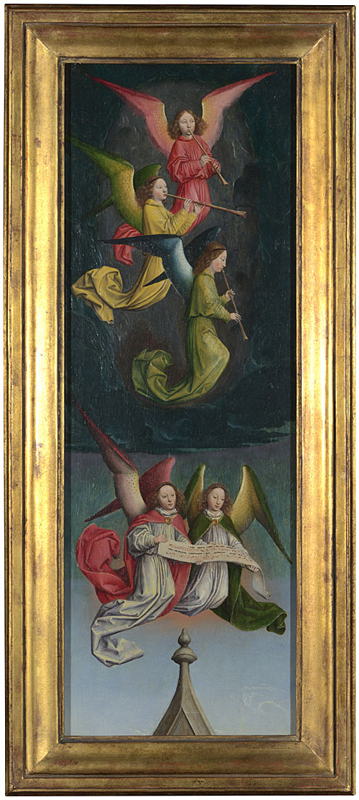
A Choir of Angels, Simon Marmion, oil on oak, about 1459, National Gallery, London, Room 63

Detail from A Choir of Angels, Simon Marmion, National Gallery, London
The clear, almost tropical colours and wonderful dynamic energy of these perfectly arranged angels in their gorgeous curving robes make for a painting more powerful and more memorable than you might expect from its modest size – just over 50 by 20cm.
This brilliant green and yellow oak leaf is a perfect echo:
 Oak leaf, December, RHS Wisley
Oak leaf, December, RHS Wisley
As are the neatly arranged leaves of one of my favourite shrubs for winter/early spring, Stachyrus praecox – here showing brilliant acid green end of season colour which contrasts perfectly with the luminous pink of the petioles. In early spring the tiny ruby buds will open into pendant strings of primrose yellow bell shaped flowers on bare branches.



Leaves and buds (bottom photograph) of Stachyrus praecox, RHS Wisley
I come across this stand of Cornus sericea ‘Hedgerows Gold’ at a rather brilliant moment – the leaves going into winter with a wild dance as they turn from green to yellow to pink:


 Cornus sericea ‘Hedgerows Gold’, RHS Wisley
Cornus sericea ‘Hedgerows Gold’, RHS Wisley
‘ANGEL TRAIL’ PAINTING NO. 10

The Donne Triptych, Virgin and Child with Saints and Donors, Hans Memling, oil on oak, about 1478, National Gallery London, Room 63
 Detail of The Donne Triptych, Hans Memling, about 1478, National Gallery, London, Room 63
Detail of The Donne Triptych, Hans Memling, about 1478, National Gallery, London, Room 63
I love the calm order and balanced structure of this Hans Memling painting, the flat mid-green of the landscape beyond, a gentle, anchoring contrast to the rich red of the Virgin’s robes and the canopy above her throne. The focus is, of course, upon the fruit being offered to the baby Jesus. There are no enticing pears to be found on my travels around the December garden but there are other gorgeous fruit which are celebratory enough for a Christmas painting.
I have long wanted a strawberry tree – Arbutus unedo. Such a handsome evergreen tree which has the generous quality of offering its pretty shell-pink flowers at the same time as its scarlet pendant fruit. Arbutus unedo is pretty as a small shrub but worth planting as soon as you can, as a spreading, slightly gnarled mature tree is particularly handsome. The fruit are edible although famously ‘unedo’ is believed to be a contraction of the Latin ‘unum edo’ – meaning ‘I eat one’ i.e. they are not as appetising as you might hope.



 Arbutus unedo ‘Roselily Minlily’, RHS Wisley
Arbutus unedo ‘Roselily Minlily’, RHS Wisley
Elsewhere at Wisley this medlar tree is humming with its strange brown fruits suspended like tiny, happy space ships amongst flying yellow leaves:


Medlar fruit and leaves, RHS Wisley
My favourite fruit – absolutely worth seeking out if you can – is the extraordinary fruit of the Handkerchief tree, Davidia involucrata. The garden at Gravetye boasts two wonderful mature Davidias – and maturity is what is required as a young tree typically takes 15-20 years to flower. The flowers are surrounded by spectacular, slightly drooping, white flower bracts – which give the tree its ‘handkerchief’ name:

Davidia involucrata in flower
The spherical nut-like fruits that follow hang from particularly graceful curving pink stalks – as dynamic and covetable as an Alexander Calder mobile:



 Davidia involucrata fruit, Gravetye Manor
Davidia involucrata fruit, Gravetye Manor
My final festive offering is this perky alternative Christmas tree – a monkey puzzle or Araucaria araucana. I love its muscly form – the fine mid-green takes me back to the immaculate grass sward of The Donne Tryptich:

 Monkey Puzzle tree in the December sunshine, RHS WIsley
Monkey Puzzle tree in the December sunshine, RHS WIsley

The Donne Tryptich, Hans Memling, National Gallery, London
So I have reached the end of another year of THE DAHLIA PAPERS. It has been a brilliant year with so many unexpected and uplifting new friendships and new connections. Thank you so much for reading, following and commenting and I wish you all a very Happy New Year,
Non,
19.Xii.2015
PS You may enjoy listening to a podcast I recorded this week for the Guardian on the best gardening books of 2015 – with the Guardian Gardening Editor, Jane Perrone, Books Editor, Clare Armistead, Matthew Wilson (‘Landscape Man’) designer, writer and snowdrop expert, Naomi Slade and Director of the Garden Museum, Christopher Woodward


